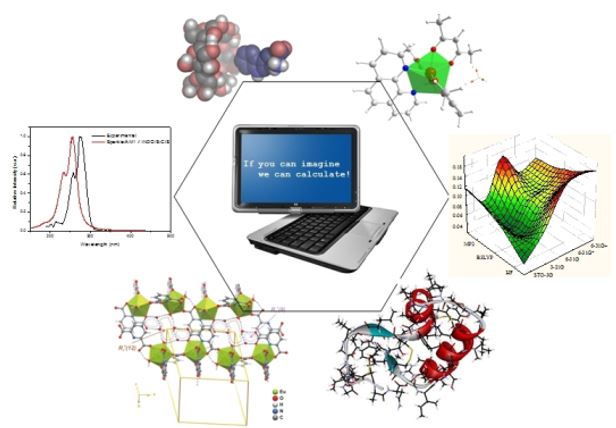BOC Sciences's Computer-Aided Drug Discovery (CADD) team can help you accelerate drug development and clinical development by designing novel compounds to provide research projects and develop advanced solutions for researchers around the world. Our team has a wealth of experience in informatics, virtual screening and molecular modeling to provide customers with a full range of computer-aided drug design support and services.

Computer-aided drug design (CADD) is a widely used technology using computational tools and resources for the storage, management, analysis and modeling of compounds. It relies on digital repositories for the study of designing compounds with physicochemical characteristics, predicting whether a given molecule will be combined with the target, and if so how strongly. Computer-based methods can help us to search new hits in drug discovery, screening many irrelevant compounds at the same time and study the structure-activity relationship of drug molecules.

The traditional strategies for discovering new drug usually begin with taking a lead structure, and then develop a chemical program to find an analog molecule which can exhibit the desired biological properties. The process often involved a long cycle and a large number of experiments, in which medical chemist utilizing their experience and intuition to ultimately select a candidate for further development. The whole process is laborious, expensive and inelegant. Contrary to traditional drug design methods, CADD has been applied as a highly effective tool for systematic assessment of potential lead candidates before they are synthesized and tested. In this way, it saves time as well as cost in drug discovery.
The drug target refers to the binding site of the drug in the body. Target analysis runs through the entire target discovery and hit identification stages. Comprehensive target profiling informs the selection of the best hit discovery strategy and is the best way to identify innovative drug candidates. We apply technical capabilities such as target verification, druggability assessment, and homology modeling to respond to project needs.
Ligand-based drug design can advance the drug discovery process at different stages by analyzing known ligands that bind to receptors in the absence of reliable target protein structure information. The specific methods include similarity search, establishment of pharmacophore model and QSAR model, skeleton transition, geometric optimization and conformational analysis, etc. In many cases, ligand-based drug design and structure-based drug design can be jointly applied to the development of drug candidates.
Compared with traditional methods, structure-based drug design is a more cost-effective and necessary tool for the lead discovery. It designs bioactive compounds based on the structure of the target or the structural information of known active compounds. Due to the recent volume and pace at which the 3-D structures of protein targets and their co-crystals have been made available, as well as the development of computing tools, structure-based drug design has become a tool for lead generation as well as for optimization.
Molecule docking has become one of the most useful drug design approach, in which the 3-D structure of a binding site can be analyzed and leads to a comprehensive investigation of the interactions between drug and receptor. Docking study plays an important role in the QSAR methods and homology modeling, so it is useful in the structure-based drug design.
Virtual screening, a commonly used computational technique in the field of drug discovery, is often applied to identify the most valuable structures, which can bind to a drug target, in a wide array of small molecules. BOC Sciences mainly focus on the designing and optimizing targeted combinatorial libraries. Additionally, our experts is able to enrich those libraries of available compounds from in-house compound repositories or vendor offerings.
ADMET properties refer to the absorption, distribution, metabolism, excretion and toxicity of molecules in organisms. ADMET prediction can help to exclude compounds with poor ADMET properties early so as to avoid costly structural modification in the later stage. At the same time, ADMET prediction can also evaluate the effect of structure optimization and evaluate whether the ADMET properties are indeed improved, so as to avoid excessive resources spent on synthesis.
Activity prediction is an important part in our CADD services, in order to predict the selectivity and affinity of compounds against targets. In this service, a molecule may be expanded to a wide range of conformers, and then their affinities to targets will be analyzed by our comprehensive evaluation system.
As an integral part of rational drug design, Quantitative Structure Activity Relationships (QSAR) has been developed to quantitatively analysis the relationships between the chemical structural-related properties and biological activity or target property) of compounds being studied. Moreover, QSAR is also recommended as a useful tool to determine the parameters responsible for biological response which have an essential effect on the optimization of lead compound.
Physicochemical properties are key factors in controlling the interactions of xenobiotics with living organisms. Computational approaches to toxicity prediction generally rely to a very large extent on the physicochemical properties of the query compounds. Consequently the reliable silico methods are important for the rapid calculation of physicochemical properties.
We apply molecular modeling, simulations, and cheminformatics to predict molecular behavior, guide synthetic strategies, and reduce trial-and-error in research.
Submit your inquiry to request a custom solution.
References
If you have any questions or encounter issues on this page, please don't hesitate to reach out. Our support team is ready to assist you.